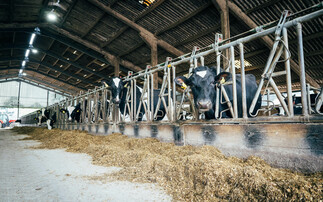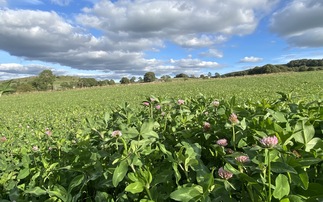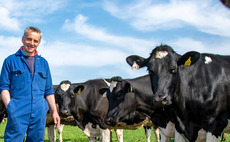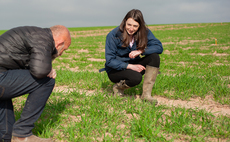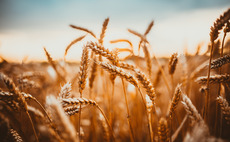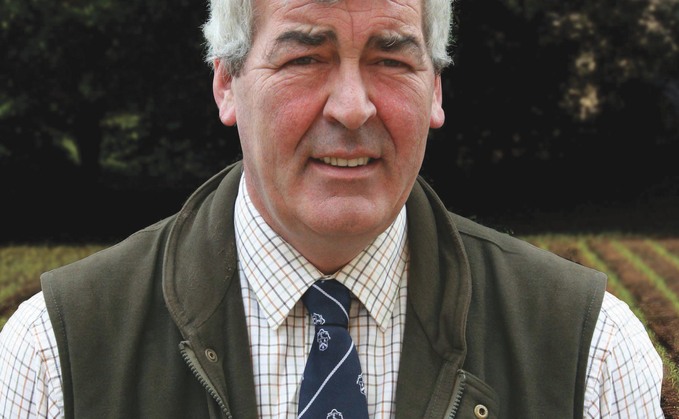
The NFU has set the ambitious target for the agriculture industry to achieve net zero by 2040, which is 10 years sooner than the national target set by the UK Government. For the dairy sector, this is a big mountain to climb.
When it comes to the subject of greenhouse gas emissions and farming, the dairy sector is often in the spotlight for the all the wrong reasons.
Contained
With almost 75% of energy contained in feed and consumed by cows converted into methane, the very nature of dairy farming presents a real sustainability challenge.
Alongside this, feed production and imports account for more than a quarter of the emissions from milk production, while nitrous oxide emissions resulting from nitrogen turnover in soil from the use of synthetic fertilisers and manure and excreta deposited during grazing all contribute to a net zero headache.
So where should dairy farmers prioritise reducing emissions? Given the magnitude of the net zero journey for dairy farmers, it is important not to attempt too much too quickly, making small changes initially.
Steps
One of the first steps is to calculate the annual carbon footprint of the farm. By identifying a base level and the areas with the greatest emissions, it makes it easier to decide where efforts should be focused.
Considering how to improve managing the health and welfare of the herd can result in improved milk quality, lower mortality and limit negative consequences of disease.
It is also worth improving energy efficiency through heat recovery systems, as this can reduce carbon dioxide emissions by reducing water heating costs and provide heated water every time milk is being cooled.
Heating can account for about one-third of the energy used in a dairy parlour and using this practice can half it, so it is an investment worth making.
Arguably the most important step to reduce on-farm emissions is improving feed efficiency. This can be achieved by using higher quality feeds and supplements and by increasing the level of non-structural carbohydrates in the cow's diet. These will reduce daily methane emissions per cow.
Reviewing
It is also worth reviewing feed supply chains to reduce embedded carbon factors. This can be a reasonably easy measure, by simply choosing to import feeds closer to the farm.
While farm replacements maintain herd size, they should be genetically superior to culled cows to contribute to the efficiency and productivity of the farm.
Genetic improvement should be combined with a replacement strategy to improve performance, while also increasing profitability.
After all, improved genetic merit can enhance health traits and increase longevity, help to control and eliminate endemic diseases, while also improving management of fertility, pregnancy rates, calving and replacements.
It is also worth looking to adopt regenerative grazing strategies, such as mob grazing, as this can successfully reintegrate farming practices with nature, while making farming businesses more resilient.
Grass which receives a longer recovery period can improve soil health and therefore cow health, while also producing lower costs due to reduced inputs.
And finally, converting to low-emission spreading techniques can reduce contact with the air and reduce ammonia emissions.
To do this well, farmers can use slurry covers, flexible sheeting systems and covers to help keep out rainwater which reduces storage capacity, while also maintaining slurry nitrogen value.
Seeking sound business and funding guidance to support a farm's journey to net zero can be key to success, as the initial outlay of investing in more sustainable farming methods can be considerable.
At the Agricultural Mortgage Corporation, we are working with the UK's three leading carbon calculator tools in their mission to help farmers transition to net zero and can offer lending support for a broad range of investments in sustainable agriculture.
Conquering the transition to net zero may not necessarily be easy, but it is an essential journey for all farmers.
Reducing emissions
Dugald Hamilton maps out eight immediate practices dairy farmers can implement to reduce emissions:
- Improving animal health to reduce respiratory, lameness, mastitis and disease issues
- Improving energy efficiency
- Feed efficiency through reducing crude protein and maximising forage quality
- Fertility management, optimising replacements and breeding the next generation of cows
- Soil management through mob grazing
- Feed additives to reduce methane production
- Low-emission slurry spreading and covering slurry stores
- Urea-based fertiliser management









